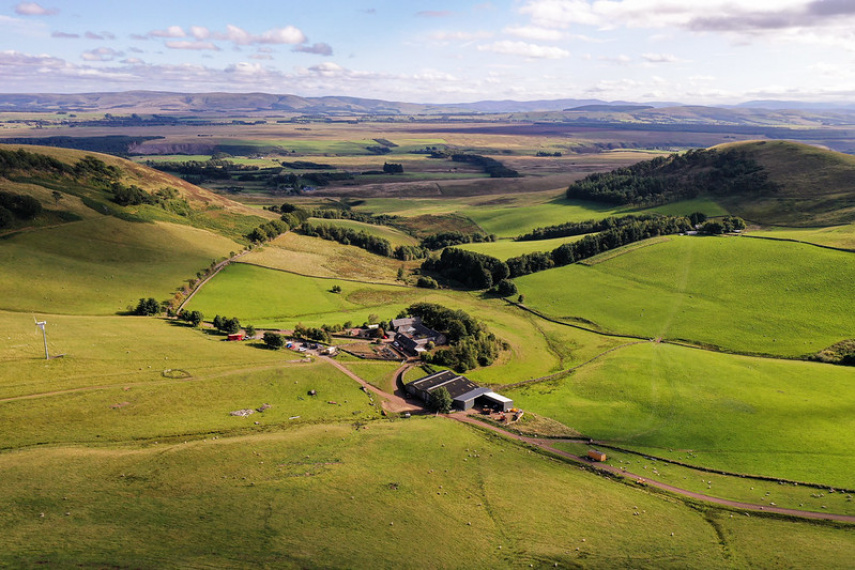
What future for agricultural tenancies?
Bob McIntosh
In his latest blog, the Tenant Farming Commissioner, Bob McIntosh, looks at the future trends for agricultural tenancies in Scotland.
This month I’ve been looking into the historic trends in letting land and suggest that the number of agricultural tenancies will continue to decline unless there are greater flexibilities in leases and incentives for land owners to let land.
Between 1982 and 2003 the area of tenanted land reduced by about a third, and following the introduction of the 1991 Agricultural Holdings (Scotland) Act the rate of decline appears to have increased. The secure nature of a 1991 Act tenancy, the rights of succession, and the pre-emptive right to buy are just some of the reasons why landlords have shied away from 1991 Act tenancies. Successive legislative changes are perceived as having altered the nature of the contract that landlords thought they had entered into, and the fear of further changes that might alter the balance of rights and responsibilities of landlord and tenant, to the detriment of the landlord, is clearly still an issue that concerns many landlords today.
In an attempt to halt or reverse the decline, the Scottish Government introduced the Short Limited Duration Tenancy and the Limited Duration Tenancy in 2003 and added the Modern Limited Duration Tenancy and repairing tenancies in 2016, the latter still to be introduced. These tenancy reforms aimed to provide a degree of security for tenants, introduce fair maintenance obligations for landlords, provide tenants with an opportunity to diversify, and introduced procedures to reduce the costs of dispute resolution.
Since then, the number of fixed duration tenancies has steadily increased and although the number of secure tenancies has continued to decline, the overall decline has significantly slowed. The total area of land in fixed duration tenancies now exceeds the area in 1991 Act tenancies. It seems that the introduction of the fixed duration tenancy has kept the sector alive but has not reinvigorated it. Many landlords still see letting as a high-risk, low-return option and where they do grant a tenancy, they are clearly reluctant – in most cases – to commit to a long-term agreement. Short-term letting very much predominates and the alternatives of contract farming and annual grazing lets are seen as safer and more comfortable alternatives.
It is particularly challenging for any new entrant wishing to get onto the farming ladder. The Scottish Land Matching Service is proving effective in matching up those wishing to enter farming and those with an opportunity to offer, be it in the form of a tenancy or some form of contract farming or share farming opportunity, but demand greatly outstrips supply. Whatever problems the agriculture sector may have, it’s a lifestyle that many people aspire to have. It’s not all about large-scale agricultural tenancies. Demand for crofts and small holdings, with or without a house, is high too. Perhaps we focus too much on the conventional agricultural tenancy as the answer, when the questions are really about how to improve the productivity of our agricultural land and how to create opportunities for people wishing to enter the sector. Partnerships, contract farming, share farming, crofting and small holding agreements – and even allotments – are all part of the solution for people who wish to own agricultural land but not farm it themselves.
I think the other important factor is the changing nature of the agricultural holding, and therefore in the nature of an agricultural lease. Some 30 years ago, the tenant’s business would have been built largely around standard agricultural activities, but raising income through diversification into non-agricultural activities has become increasingly important. In the 2019-2020 Scottish Government Farm Business Income Survey, income from diversified activities represented 22% of the total income, and the average income of farms with diversified activities was twice that of those with no diversification.
Looking ahead, we can see that other, strictly non-agricultural activities will become more important. The current emphasis in the regime of support payments is moving away from primarily supporting conventional agricultural activities to support for activities that contribute to reducing net greenhouse gas emissions, such as tree and hedgerow planting, and for activities that increase biodiversity and help to prevent flooding.
So far it has been possible to accommodate diversification within the agricultural holdings legislation and agricultural leases, but I wonder if it’s going to get increasingly difficult to fit these new activities into legislation that is primarily designed to deal with conventional agricultural activities. Do we now need something that is more able to accommodate a much wider range of land management activities? Perhaps we need to be thinking about developing legislation that supports a land management tenancy and a land management lease rather than an agricultural tenancy and an agricultural lease. That, I think, would make it easier for land to be let for a variety of purposes.
I think we have to conclude that we haven’t yet found the perfect model that provides the best balance of rights and freedoms for both landlord and tenant and which will incentivise land owners to provide tenancy opportunities.
For more information, visit landcommission.gov.scot or get in touch at 01463 423 300 or email tfc@landcommission.gov.scot.
